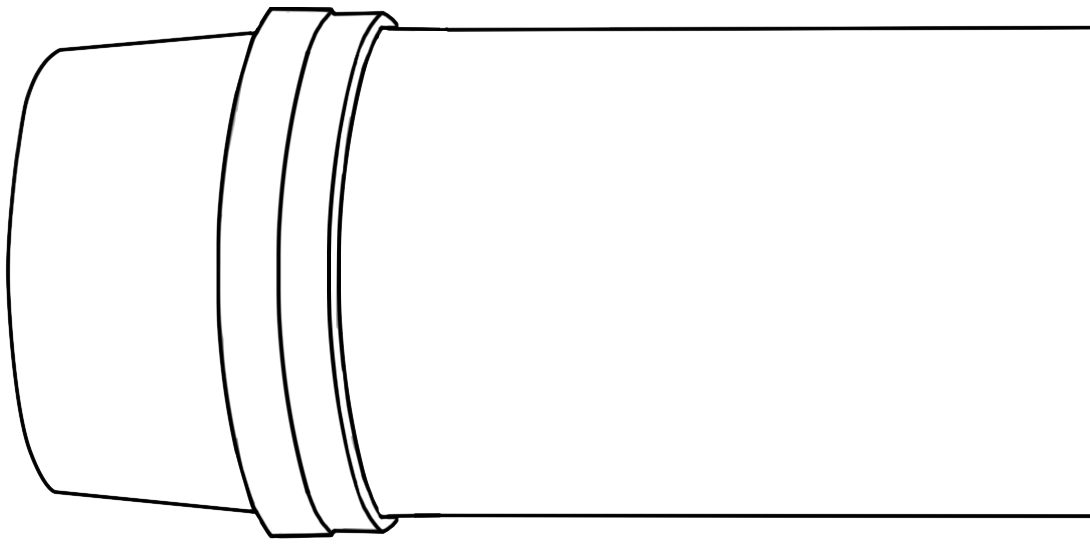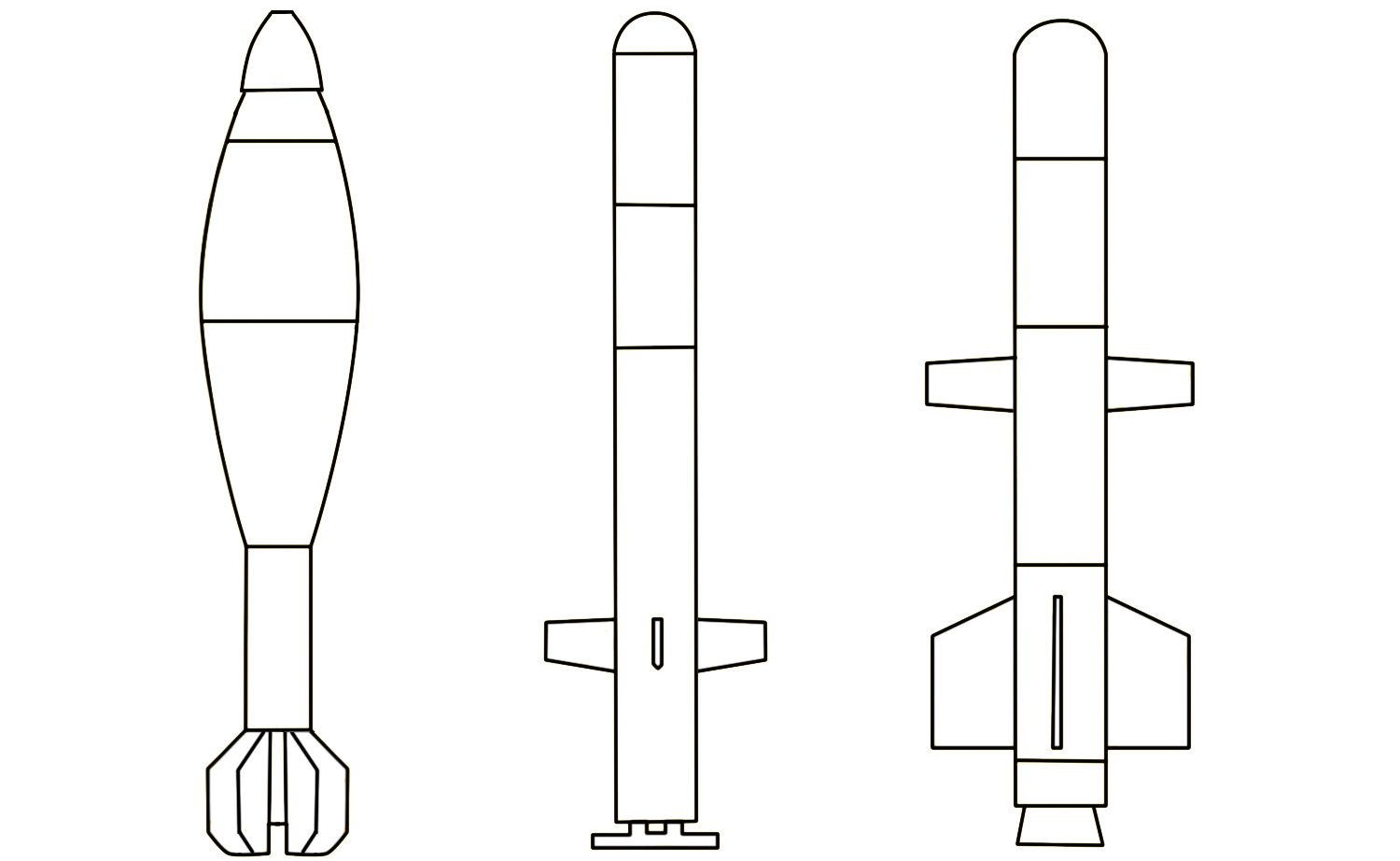Tank Gun Projectiles
Tank gun projectiles are projectiles fired from tank guns. They typically feature a fuze, often located in the nose, a steel body containing the explosive charge, obturating bands
 A recessed groove around the body of a projectile
(or sometimes driving bands
A recessed groove around the body of a projectile
(or sometimes driving bands
 A soft metal band around a projectile, usually located near its base
), and frequently a fin assembly for stabilisation.
A soft metal band around a projectile, usually located near its base
), and frequently a fin assembly for stabilisation.
Most tank gun projectiles are between 40–70 cm in length and 105–125 mm in nominal diameter, and form part of a round of tank gun ammunition. This ammunition can be fixed, semi-fixed, or separate-loading, which means that some tank gun projectiles are affixed to a cartridge case with an internal propellant charge, whilst others are fired using one or more separate propellant charges.
The effective range of a tank gun projectile varies by munition and gun type, but is typically no less than two to four kilometres. Certain combinations of gun and projectile may have maximum ranges exceeding 10 kilometres.
Tank gun projectiles are fired from tank guns.
Direct-fire, often smoothbore guns fitted to tanks. Tanks guns can fire a range of projectiles, ranging from relatively orthodox HE-FRAG types to highly specialised kinetic energy penetrators used to pierce the armour of other tanks. Tank guns can be very accurate weapons, and typically have an effective range of 3 to 5 kilometres.
These are direct-fire, breech
 The rear opening of a barrel (opposite the muzzle), usually containing the chamber of the gun.
-loading weapons mounted on tanks, which are mobile, armoured heavy weapon platforms that play key roles in modern armed conflicts. Modern tank guns are generally smoothbore, so most contemporary tank gun projectiles have fins
The rear opening of a barrel (opposite the muzzle), usually containing the chamber of the gun.
-loading weapons mounted on tanks, which are mobile, armoured heavy weapon platforms that play key roles in modern armed conflicts. Modern tank guns are generally smoothbore, so most contemporary tank gun projectiles have fins
 Fixed or adjustable vanes, typically attached to the body of a projectile
for stabilisation.
Fixed or adjustable vanes, typically attached to the body of a projectile
for stabilisation.
Tanks engage various targets at different distances, so the projectiles fired by tank guns are diverse. Two common types are ‘high explosive,’ (sometimes referred to as high explosive multi purpose) and ‘kinetic energy penetrator’:
- High explosive rounds are used to target lightly armoured or unarmoured vehicles, destroy structures, or target personnel in buildings. Multi-purpose projectiles often consist of a high explosive shaped charge with a thick-walled body, a fuze, and a cartridge case filled with propellent. The thick-walled body generally fragments on impact, providing an anti-personnel effect. Multi-purpose cartridges may be fired against lightly armoured or unarmoured vehicles, or used to target personnel inside buildings.
- Kinetic energy penetrator tank gun projectiles do not have an explosive warhead. Instead, they use dart-shaped projectiles with a small cross-section fired at very high speeds to pierce armour. These high-velocity penetrators are almost unique to tank guns and are primarily used to engage heavily armoured targets such as other tanks.
The direct-fire nature of tank guns distinguishes them from indirect-fire weapons such as mortars and artillery guns. Direct fire is used when a target is within the line of sight, with the weapon aimed directly at it, resulting in a relatively flat projectile trajectory. Indirect fire is often used when the target is not visible, results in higher-angle, arcing trajectories. Because they are direct-fire weapons used to engage relatively small targets, tank guns are capable of greater precision than artillery guns. However, the relatively flat trajectory of fire means that, if a tank gun projectile misses its target, it can potentially travel a long distance before striking another object or the ground.
Many tank gun projectiles use a sabot to centre the projectile in the gun’s bore. In flight, the sabot separates into two or more pieces, sometimes called ‘petals’, often found along the line of fire before the impact point.